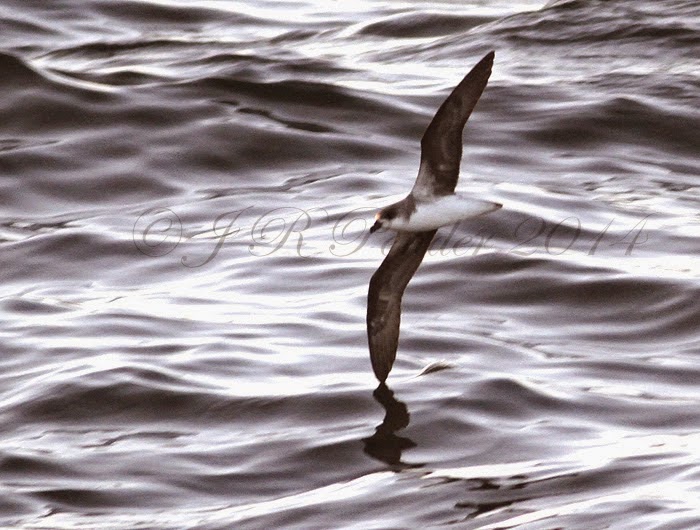I was itching to get back to the patch yesterday but commitments prevented it so it was a bit gutting to hear the news of a Semipalmated Sandpiper and Richard's Pipit found at Keyhaven Lagoon so on the sunday an early start was made to see if I could catch up with these birds and to catch up on the birds at the patch. The weather was distinctly fresher than of late with a brisk north-easterly wind and a clear sky giving lovely bright conditions.
I parked on the corner at Lower Pennington Lane and walked west. There were thousands of hirundines, mainly House Martin, feeding over the fields inland from the corner and while there seemed to be a steady easterly movement of birds this didn't amount to a huge number of birds, perhaps a few thousand, maybe up to 10,000, through during my time I was on site. This movement in hirundines seemed to be reflected a little by Chiffichaff and as walked the Ancient Highway westwards I had at least 15 birds moving in a definite 'viz mig' manner eastwards alone the hedgerow lining the track.
The work during the summer landscaping Efford Lagoon has created extensive bare areas around its margins and this is currently favoured feeding area for pipits and wagtails, today there were approximately 50 Meadow Pipit and 25 Alba Wagtails present, many of the Alba Wagtails appeared to be White Wagtail. Otherwise the Ancient Highway appeared fairly slow with a total of three Yellow Wagtail and two Whitethroat being the only birds of note other than the hirundines and Meadow Pipits moving overhead.
White Wagtail feeding around Efford Lagoon
Chiffchaff - I recorded at least 15 birds moving east along the Ancient Highway
At Keyhaven Lake there was a single Sandwich Tern and in the scrub inland from the lake there were five Chiffchaff and a single Whitethroat. There were around 60 Turnstone roosting on the boats on the lake, they seem to favour the RIBS presumably as the rubber surface offers better grip than the fibreglass of the numerous yachts. They certainly make a mess of the boats!
Turnstone roosting on a RIB at Keyhaven Lake.
I eventually got to Keyhaven Lake and there were around 30 birders present scanning the lagoon. I bumped into Tim Parmister and he informed me that the Semipalmated Sandpiper had not been seen but that the Richard's Pipit had been showing on and off. So I set-up my scope and began scanning. There were a lot of birds on the lagoon with perhaps 250 Dunlin, 45 Ringed Plover, three Little Stint, 50 Grey Plover, 25 Knot, 75 Teal, 50 Wigeon and my first Brent Goose of the winter. At least three Wheatear were also present on the mud around the lagoon. I scanned the back edge of the lagoon in the hope of picking up the Richard's Pipit and after a while there it was, perched on a clod of mud along the edge of the sedges and grasses. After putting a few of the assembled birders onto it I tried to get a few digiscoped shots but it was a little distant and there was considerable camera shake from the wind.
Brent Goose - My first of the winter
Grey Plover and Knot - Good numbers on Keyhaven Lagoon today
Richard's Pipit - Very distant digiscoped shot taken in considerable wind.
After an hour or so I wandered on and had a quick look on Fishtail Lagoon for the Semip. but no luck, there were a handful of Teal and Wigeon plus approximately 75 Black-tailed Godwit. Three Spotted Redshank were feeding in unison along the back of the lagoon, I am not sure there are many other waders other than Avocet that feed in unity like this. It was time to head back so I walked the scrub along the back of Butts Lagoon and then past the dry Shoveler Pools back to the car.
Wigeon - A lovely chestnut male in eclipse plumage on Fishtail Lagoon
Spotted Redshank on Fishtail Lagoon































































